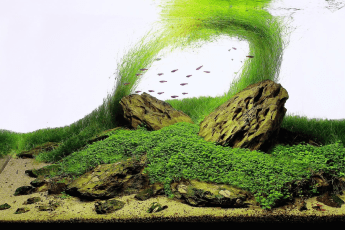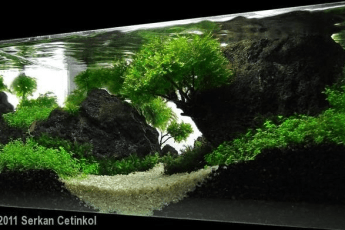Aquascaping, the art of creating captivating underwater landscapes within aquariums, has evolved into a mesmerizing blend of nature and design. Among the various principles guiding aquascapers, the Rule of Thirds stands out as a fundamental concept that transforms aquariums into captivating works of art. In this article, we’ll explore the significance of the Rule of Thirds in aquascaping and how embracing this rule can elevate your aquatic masterpiece to new heights.
Understanding the Rule of Thirds:
The Rule of Thirds is a compositional guideline that divides an image into nine equal parts, both horizontally and vertically, creating a grid. The main idea is to position key elements along these lines or at their intersections, enhancing the overall balance and visual appeal of the composition. This rule is widely employed in photography, painting, and, of course, aquascaping.
Applying the Rule of Thirds in Aquascaping:
Focal Points:
The Rule of Thirds encourages aquascapers to place the main focal points, such as driftwood, rocks, or vibrant plants, along the imaginary lines or intersections. This positioning draws the viewer’s attention to these key elements, creating a harmonious and visually pleasing arrangement.
Balance and Harmony:
By adhering to the Rule of Thirds, aquascapers can achieve a sense of balance and harmony in their aquarium designs. Placing the primary elements off-center allows for negative space, preventing the aquascape from feeling cluttered and overwhelming. This approach mimics the natural order of landscapes, creating a more serene and inviting underwater environment.
Depth and Perspective:
Aquascaping is not merely about arranging decorations in a tank but about creating a sense of depth and perspective. The Rule of Thirds aids in achieving this by guiding aquascapers to position foreground, midground, and background elements along the grid lines. This strategic arrangement adds depth to the aquarium, making it visually dynamic and interesting.
Plant Placement:
For planted aquariums, the Rule of Thirds is instrumental in achieving an aesthetically pleasing distribution of plant life. Placing taller plants along the lines and shorter plants at the intersections creates a natural flow, adding a sense of movement and life to the aquascape.
Imitating Nature:
Nature seldom adheres to strict symmetry, and aquariums that mimic the irregular patterns found in natural landscapes often evoke a stronger emotional response. The Rule of Thirds facilitates the creation of organic, asymmetrical layouts that resonate with the beauty of the natural world.
Conclusion:
In the realm of aquascaping, the Rule of Thirds is more than just a guideline; it is a key to unlocking the full potential of your aquarium’s visual impact. By strategically placing elements in alignment with this rule, aquascapers can elevate their creations to an artistic level, transforming simple tanks into mesmerizing underwater landscapes. As you embark on your next aquascaping journey, remember the Rule of Thirds as your trusted companion in crafting aquatic masterpieces that captivate the eye and soothe the soul.




